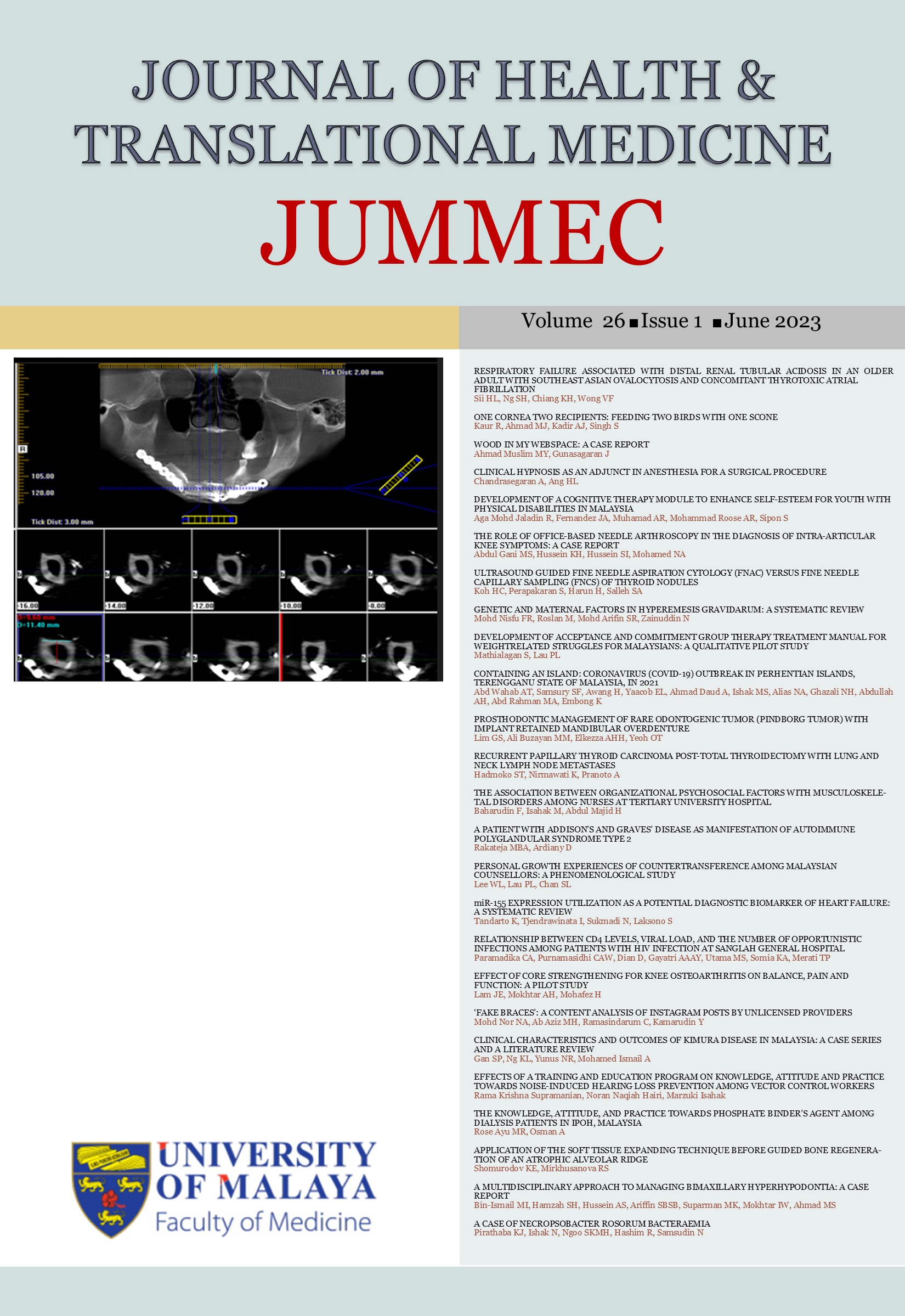RELATIONSHIP BETWEEN CD4 LEVELS, VIRAL LOAD, AND OPPORTUNISTIC INFECTION NUMBERS ON PATIENTS WITH HIV INFECTION AT SANGLAH GENERAL HOSPITAL DENPASAR
Received 2021-10-13; Accepted 2022-06-10; Published 2023-04-06
DOI:
https://doi.org/10.22452/jummec.vol26no1.17Abstract
Introduction: HIV virus tend to attack cells with CD4 antigens. Opportunistic infection (OI) is the most common complication of HIV infection and causes major morbidity and mortality in people with HIV infection.
Method: This study used cross-sectional design conducted at VCT Polyclinic of Sanglah General Hospital, Denpasar. Sampling method was carried out by total sampling from secondary data on medical records of patients with first visit to polyclinic from January 2018 - December 2019 containing identity, OI, CD4 levels, and viral load of the subjects with total sample 527 people. Spearman correlation test was used to determine the bivariate relationship.
Results: In this study, from 527 subjects, OI were obtained in 320 samples (60.7%) with candidiasis as the most prevalent OI (58.8%). The highest prevalence of OI was in the group with CD4 levels < 200 cells/µL and viral load > 50 copies/ml. In bivariate analysis, CD4 levels had a significant negative correlation with OI numbers (r = -0.66), viral load had a significant positive correlation with the number of OIs (r = 0.52), and viral load had a significant negative correlation with CD4 levels (r = -0.46).
Discussion and Conclusion: The lower the CD4 levels, the higher the number of OI, while the lower the viral load, the less the number of OI. Lower viral load, then CD4 levels higher in people with HIV infection.
Downloads
Downloads
Published
Issue
Section
License
All authors agree that the article, if editorially accepted for publication, shall be licensed under the Creative Commons Attribution License 4.0 to allow others to freely access, copy and use research provided the author is correctly attributed, unless otherwise stated. All articles are available online without charge or other barriers to access. However, anyone wishing to reproduce large quantities of an article (250+) should inform the publisher. Any opinion expressed in the articles are those of the authors and do not reflect that of the University of Malaya, 50603 Kuala Lumpur, Malaysia.


